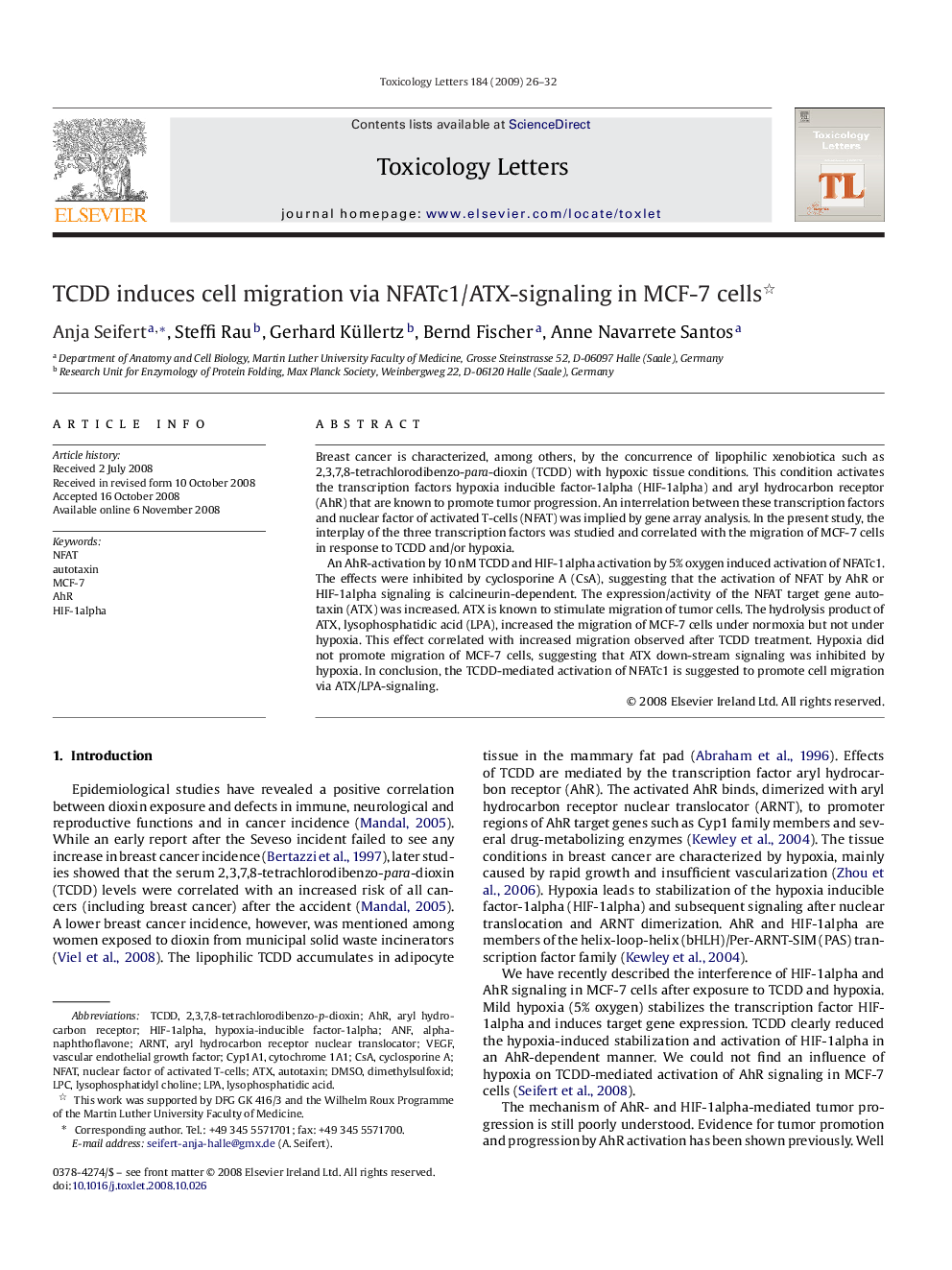| Article ID | Journal | Published Year | Pages | File Type |
|---|---|---|---|---|
| 2601219 | Toxicology Letters | 2009 | 7 Pages |
Breast cancer is characterized, among others, by the concurrence of lipophilic xenobiotica such as 2,3,7,8-tetrachlorodibenzo-para-dioxin (TCDD) with hypoxic tissue conditions. This condition activates the transcription factors hypoxia inducible factor-1alpha (HIF-1alpha) and aryl hydrocarbon receptor (AhR) that are known to promote tumor progression. An interrelation between these transcription factors and nuclear factor of activated T-cells (NFAT) was implied by gene array analysis. In the present study, the interplay of the three transcription factors was studied and correlated with the migration of MCF-7 cells in response to TCDD and/or hypoxia.An AhR-activation by 10 nM TCDD and HIF-1alpha activation by 5% oxygen induced activation of NFATc1. The effects were inhibited by cyclosporine A (CsA), suggesting that the activation of NFAT by AhR or HIF-1alpha signaling is calcineurin-dependent. The expression/activity of the NFAT target gene autotaxin (ATX) was increased. ATX is known to stimulate migration of tumor cells. The hydrolysis product of ATX, lysophosphatidic acid (LPA), increased the migration of MCF-7 cells under normoxia but not under hypoxia. This effect correlated with increased migration observed after TCDD treatment. Hypoxia did not promote migration of MCF-7 cells, suggesting that ATX down-stream signaling was inhibited by hypoxia. In conclusion, the TCDD-mediated activation of NFATc1 is suggested to promote cell migration via ATX/LPA-signaling.
